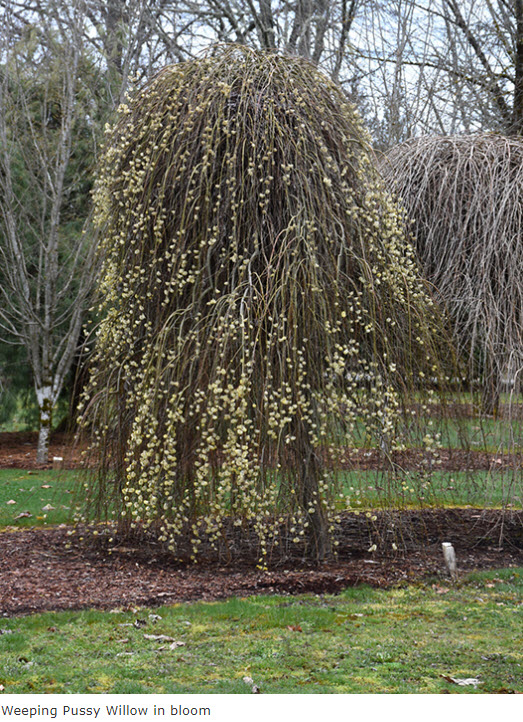Click below to listen to my 2 min. Garden Bite radio show: Pussy Willows for early Pollinators
I talked last week about some new 2022 Spring bloomers. Today I’m focusing on our native Pussy willows! This native shrub provides some of the earliest flowers which means pollen for our native bees! The foliage is also host to native butterfly caterpillars.
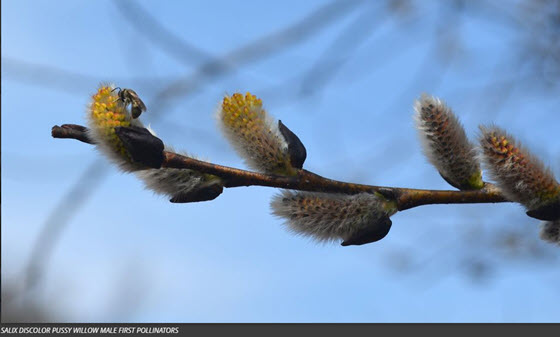
Pussy willows are fast growing, up to 15 to 20 feet tall and prefer wet sites but will tolerate a wide variety of soils. These shrubs are either male or female, they both have flowers but the male’s are showier! The female flowers can disperse and move with the wind….similar to cottonwood flowers, which, admittedly, can be a nuisance. Male flowering plants are usually what is sold in the garden centers.
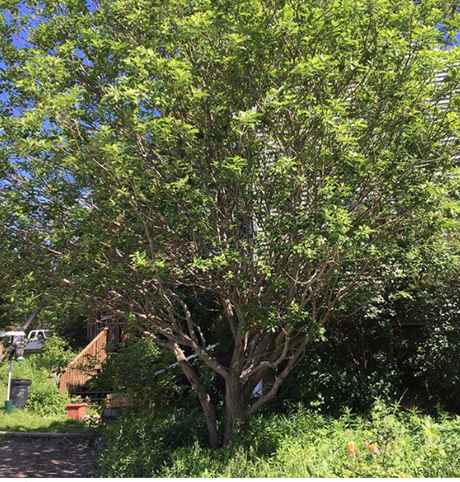
The good thing is, you don’t need plants of both sexes to get flowers…planting one male plant will give you showy flowers.

Pussy willows are vigorous growers, you can cut them back to the ground and you’ll get more shoots and more flowers.
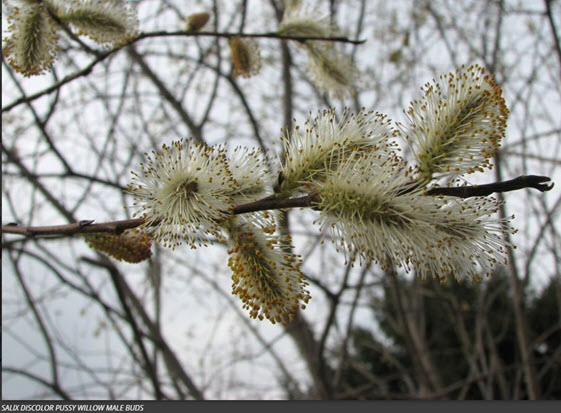
Cuttings can be woven to make a wattle fence or garden border.

Salix discolor is the native but there are also cultivars. Goat willow or French pussy willow, Salix caprea, is native to Europe and Asia, and has many cultivars grown for their attractive stem color or shape. More photos of Salix caprea by KEW.
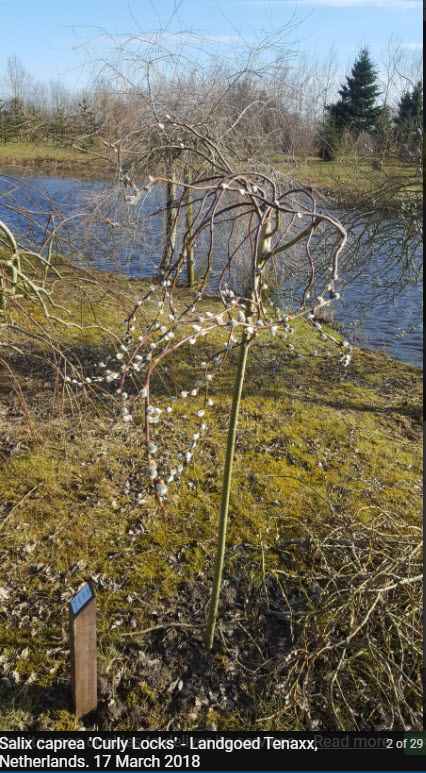
And another super cool thing… Cornell University is working extensively on willows for bioenergy. Wood chips made from willows can be dried and pelletized to produce heat and/or electricity and biofuels such as ethanol.
